Noise Analysis and Structural Optimization of Automobile Scroll Compressor Air Valve
Abstract
:1. Introduction
2. Scroll Compressors and Valves
3. Bench Test Analysis
3.1. Analysis of Experimental Results
3.2. Analysis of Simulation Results
- (1)
- The muffler medium used is non-viscous, thus avoiding any energy loss associated with the propagation of sound waves. Moreover, the heat transfer between the wall and the external environment is not factored into the analysis.
- (2)
- The initial speed of the refrigerant is initially set to zero at the start of operation to ensure zero interference to the system. This positioning allows the static density and pressure of the refrigerant to accurately align with the actual operating conditions.
- (3)
- Each acoustic parameter of the sound wave is a first-order trace of the propagation process, and the propagation itself is devoid of heat transfer.
4. Muffler Acoustic Calculation Model
4.1. Theoretical Studies
4.2. Structural Innovation Design
4.3. Parameter Design
5. Verification of Sound Field Simulation Results
5.1. Working Conditions
5.2. Comparison of Surface Sound Power Levels
5.3. Sound Pressure Level Comparison
5.4. Transfer Loss Analysis
6. Conclusions
- (1)
- For the undivided muffler chamber, the sound power level of its rear muffler chamber is uneven, which means that the sound wave cannot fully reflect in extra space, resulting in low structural utilization.
- (2)
- The expansion ratio of the resistive muffler has a significant impact on the muffling volume of the structure, which means that the muffling volume will increase as the expansion ratio increases.
- (3)
- The surface sound power level of the divided chamber is more even, which means that the sound power level of the structure is more uniform, and the maximum value is reduced by 17 dBA compared to the undivided structure, indicating that the divided chamber structure can improve the muffling effect.
- (4)
- A comparison of the sound pressure levels before and after the end caps are divided reveals a decrease in sound pressure levels in all bands, with the maximum reduction being 37.31 dBA, which means that the new structure can effectively reduce the noise level of the structure.
- (5)
- The inserted pipe structure can reduce the pressure loss generated by the chamber structure and improve the anechoic capacity, with a maximum value of 75.20 dBA, indicating that the inserted pipe structure can also improve the muffling effect.
Author Contributions
Funding
Institutional Review Board Statement
Informed Consent Statement
Data Availability Statement
Conflicts of Interest
References
- Son, Y.; Choi, J.; Lee, S. Noise radiation analysis of the hermetic reciprocating compressor by considering acoustic-structure interaction. J. Mech. Sci. Technol. 2023, 37, 607–615. [Google Scholar] [CrossRef]
- Sun, X.D.; Lu, H.J.; Sun, H.; Liu, C. Research on the Radiating Characteristics of Aerodynamic Noise of Compressor Suction Silencer. Noise Vib. Control 2017, 37, 194–198. [Google Scholar]
- Chen, Q.; Zhang, J.; Jiang, Z.X. Experimental Study on Aerodynamic Noise of Automotive Air Conditioning and Engineering Application Based on Direct Simulation Method of LBM. J. Mech. Des. 2020, 37, 208–214. [Google Scholar]
- Galindo, J.; Tiseira, A.; Navarro, R.; Tarí, D.; Meano, C.M. Effect of the inlet geometry on performance, surge margin and noise emission of an automotive turbocharger compressor. Appl. Therm. Eng. 2017, 110, 875–882. [Google Scholar] [CrossRef]
- Shen, J.; Chen, W.; Yan, S.; Zhou, M.; Liu, H. Study on the noise reduction methods for a semi-hermetic variable frequency twin-screw refrigeration compressor. Int. J. Refrig. 2021, 125, 1–12. [Google Scholar] [CrossRef]
- Ji, J.; Jia, J.; Yi, F. Analysis and control of idle noise of vortex automobile air-conditioning compressor. Compress. Technol. 2018, 5, 40–42+47. [Google Scholar]
- Wu, H.; Shen, Y.; Liang, M.; Liu, J.; Wu, J.; Li, Z. Performance Research and Optimization of Sound Insulation Hood of Air Compressor Unit. Appl. Sci. 2021, 11, 10364. [Google Scholar] [CrossRef]
- Sun, S.; Xing, Z.; Chen, W.; Zhou, M.; Wang, C.; Cui, H. Study on Characteristics and Control of Aerodynamic Noise of a High-Speed Centrifugal Air Compressor for Vehicle Fuel Cells. Appl. Sci. 2022, 12, 9962. [Google Scholar] [CrossRef]
- Han, K.J.; Ji, Z.L.; Ma, X.Y. Design and experimental verification of intake muffler for turbocharged diesel engine. Trans. Chin. Soc. Intern. Combust. Engines 2022, 4, 331–337. [Google Scholar]
- Zhang, Z.G.; Gao, L.; Sun, H.B.; Lan, T.Y.; Wu, W. Design and optimization of intake silencer for reciprocating compressor. Noise Vib. Control 2022, 42, 231–235. [Google Scholar]
- Chen, Q.; Jiang, J.; Wang, Z.; Chen, X.; Zhao, S.; Zhang, H.; Hu, H. Broadband muffler with acoustic bright and dark modes for refrigerator noise control. Appl. Acoust. 2023, 211, 109471. [Google Scholar] [CrossRef]
- Dianov, A. Stoppage noise reduction of reciprocating compressors. IEEE Trans. Ind. Appl. 2021, 57, 4376–4384. [Google Scholar] [CrossRef]
- Zhang, Y.; Sun, S.; Xing, Z.; Chen, W.; Zhou, M.; Zhang, Z. Study on noise characteristics of two-stage centrifugal air compressor for fuel cell. In Proceedings of the 2020 IEEE 3rd International Conference on Renewable Energy and Power Engineering (REPE), Edmonton, AB, Canada, 9–11 October 2020; pp. 26–33. [Google Scholar]
- He, Z.; Li, D.; Han, Y.; Zhou, M.; Xing, Z.; Wang, X. Noise control of a twin-screw refrigeration compressor. Int. J. Refrig. 2021, 124, 30–42. [Google Scholar] [CrossRef]
- Ebrahimi-Nejad, S.; Rahimi, D.; Kheybari, M.; Majidi-Jirandehi, A.A. Effects of inlet-outlet positioning, muffler geometry, and baffle design on vehicle muffler performance for desired sound transmission loss, Proceedings of the Institution of Mechanical Engineers. Part D J. Automob. Eng. 2023, 237, 1160–1169. [Google Scholar] [CrossRef]
- Xia, Z. Influence analysis of structural parameters on the performance of reactive muffler. Mach. Des. Manuf. 2020, 4, 216–218+222. [Google Scholar]
- GB/T 4980-2003; Determination of Sound Level for Noise Emitted by Displacement Compressors. Standardization Administration of the People’s Republic of China: Beijing, China, 2022.
- Xiang, L.Y.; Zuo, S.G.; Wu, X.D.; Zhang, J.; Liu, J.F. Analysis and structural optimization of a dual-chamber reactive muffler for vehicles. Trans. Chin. Soc. Agric. Eng. 2015, 31, 65–71. [Google Scholar]
- Khairuddin, M.H.; Said Mohd, F.M.; Dahlan, A.A.; Kadir, K.A. Review on resonator and muffler configuration acoustics. Arch. Acoust. 2018, 43, 369–384. [Google Scholar]

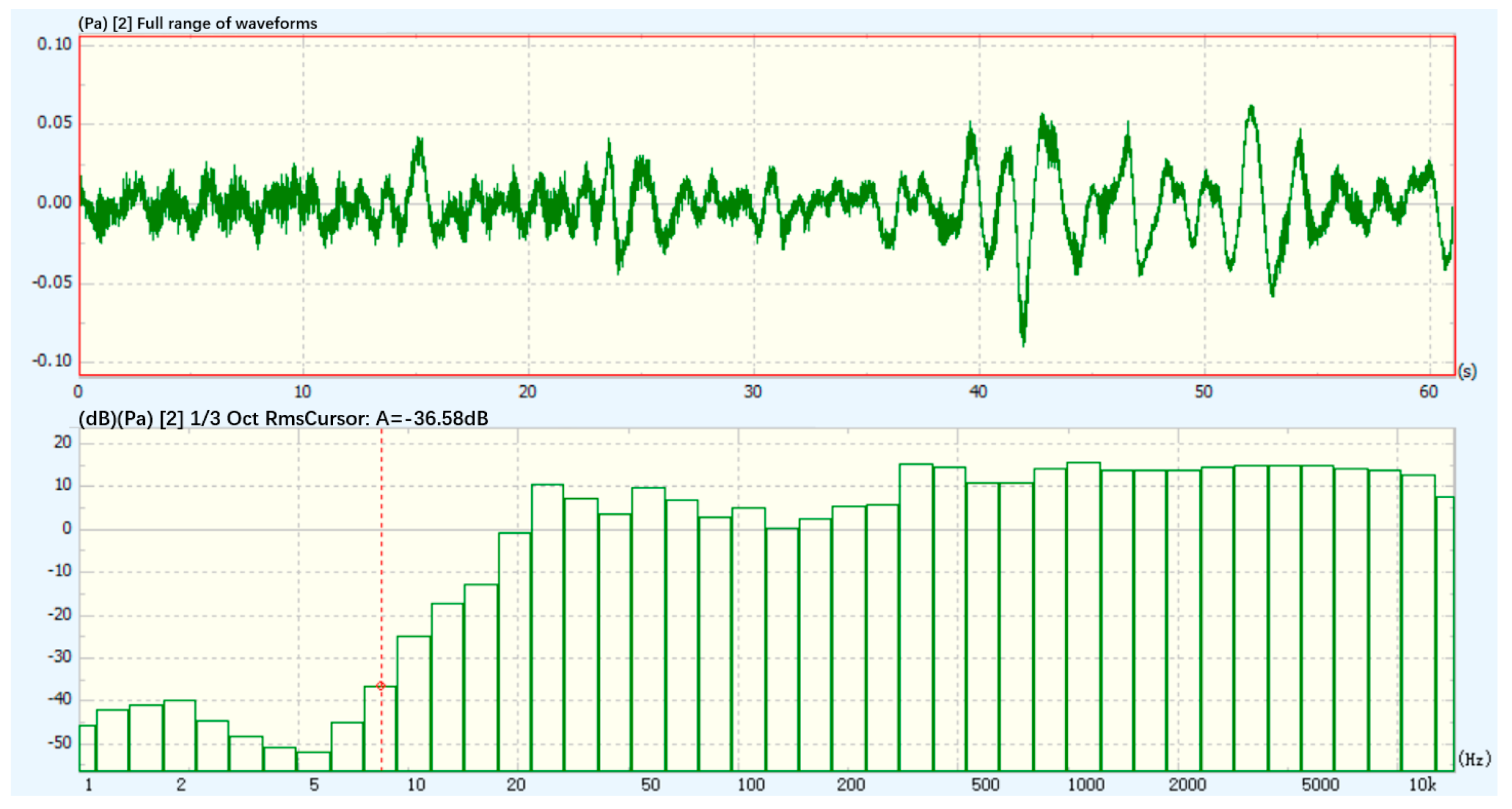
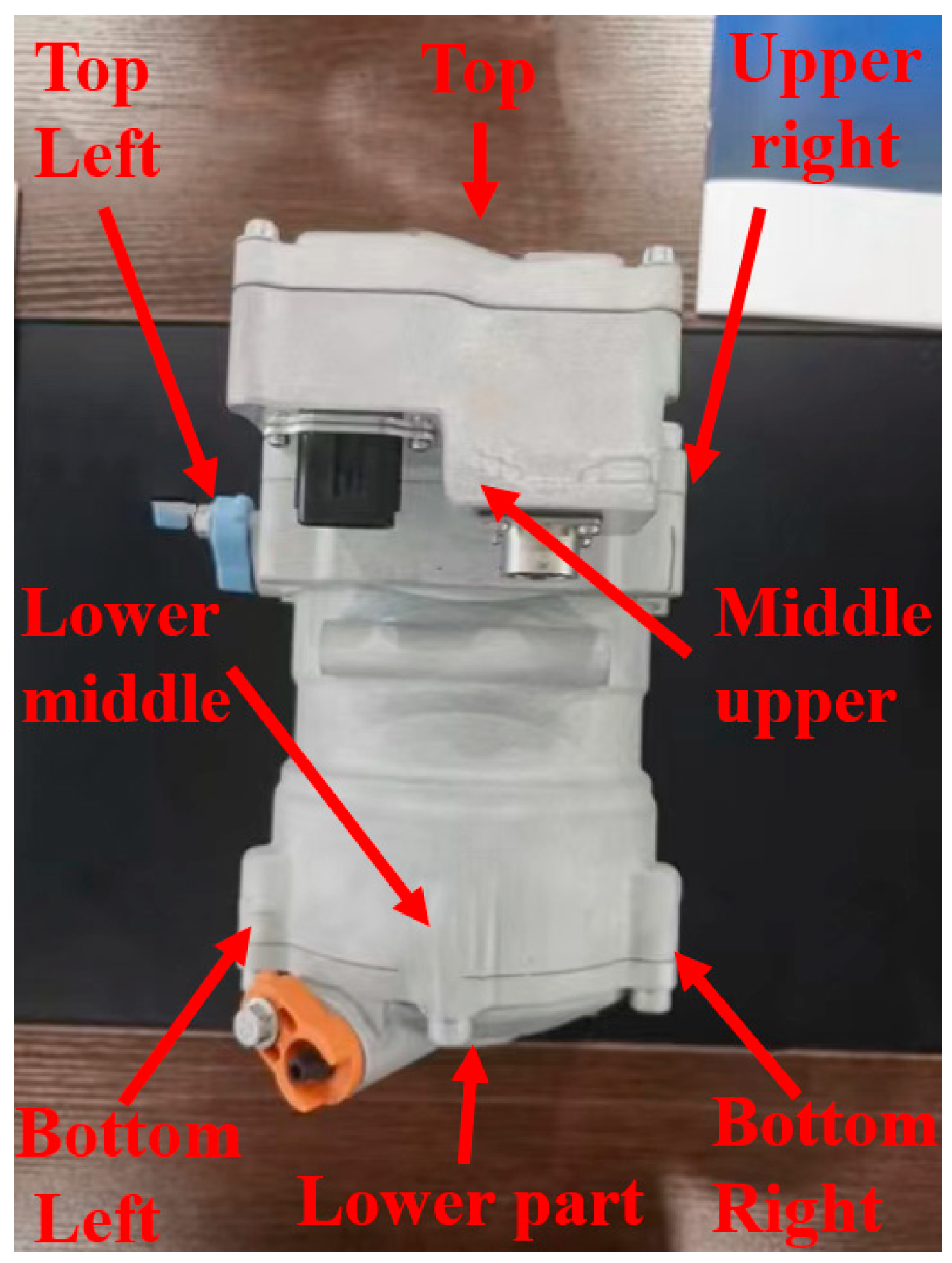
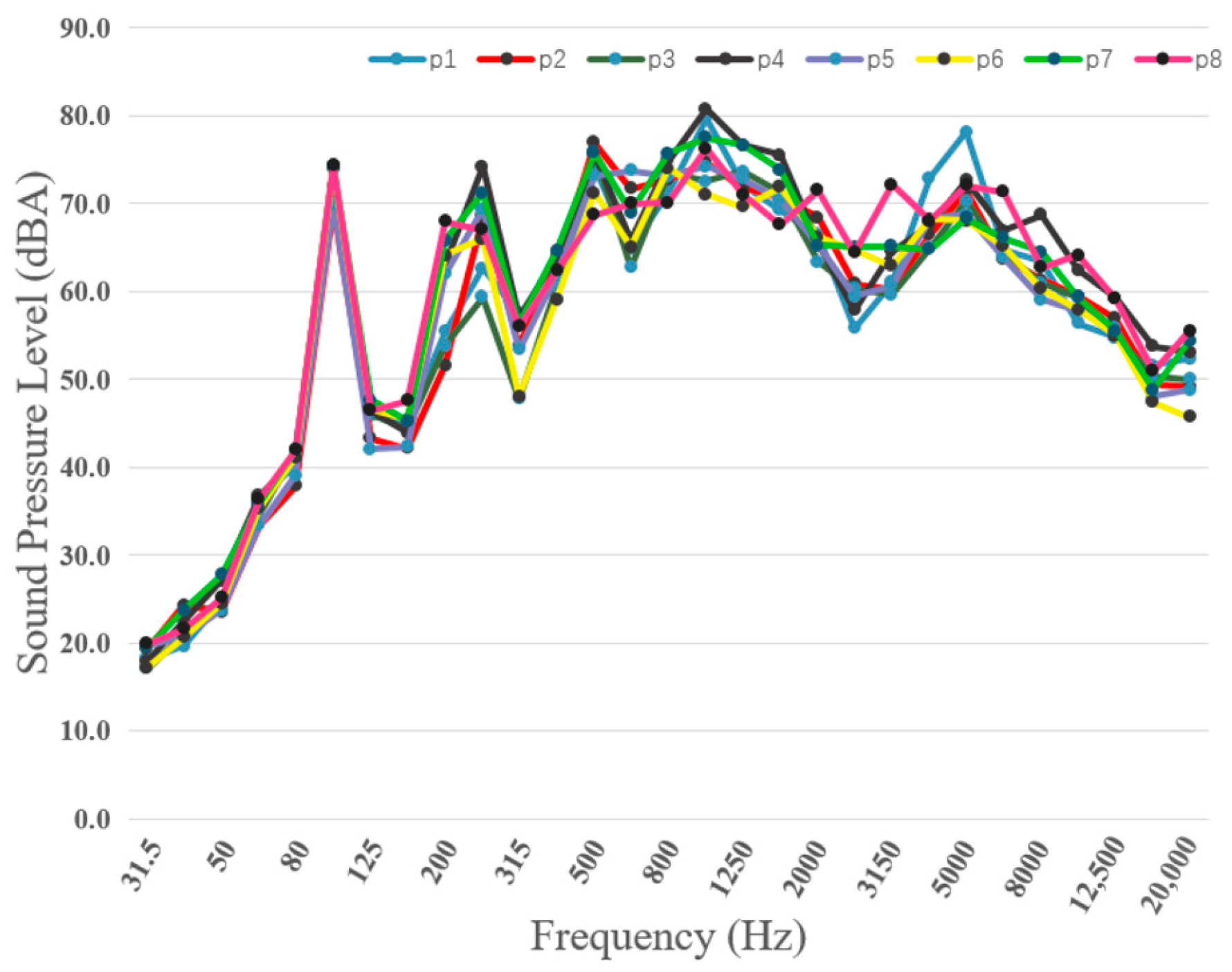

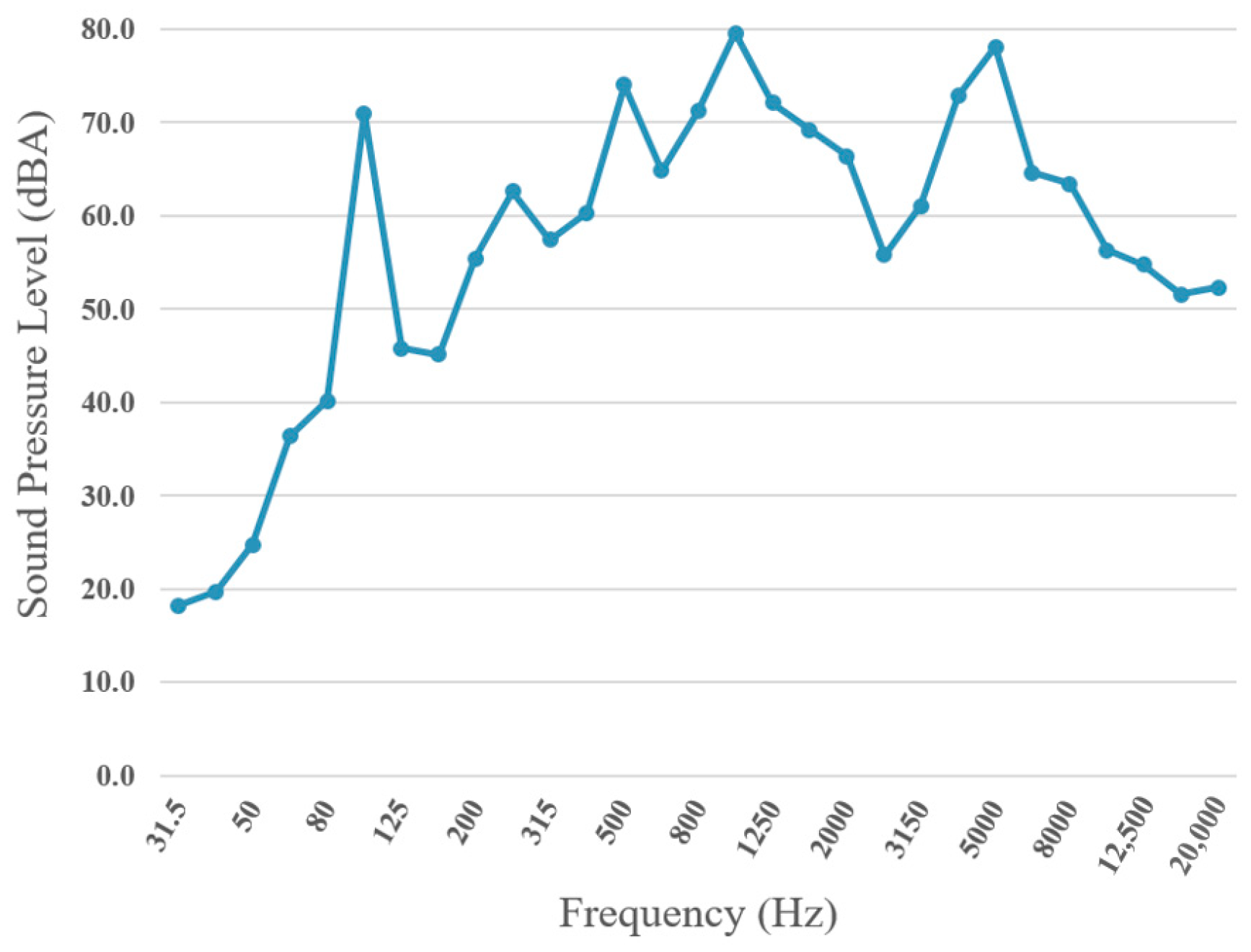
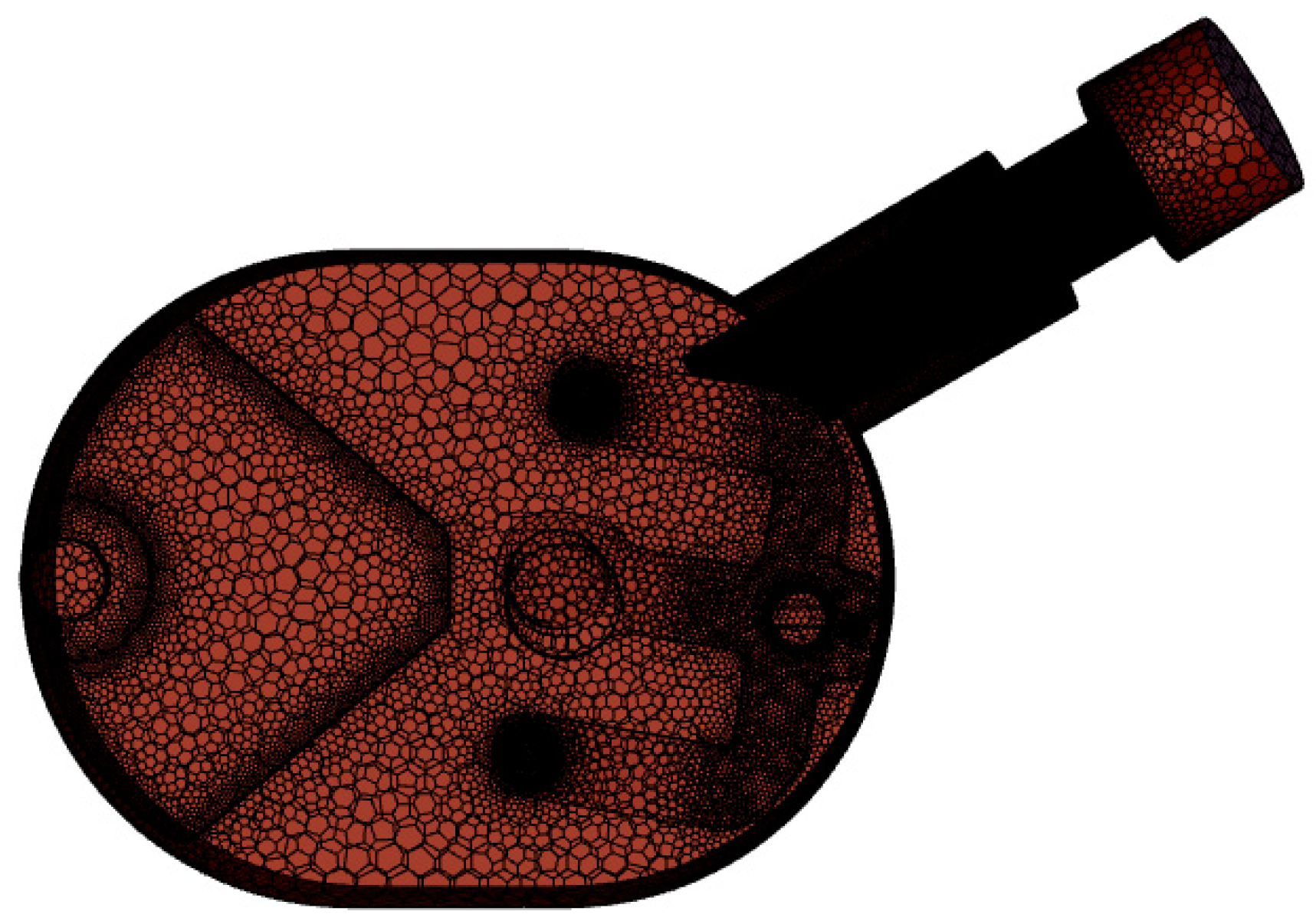
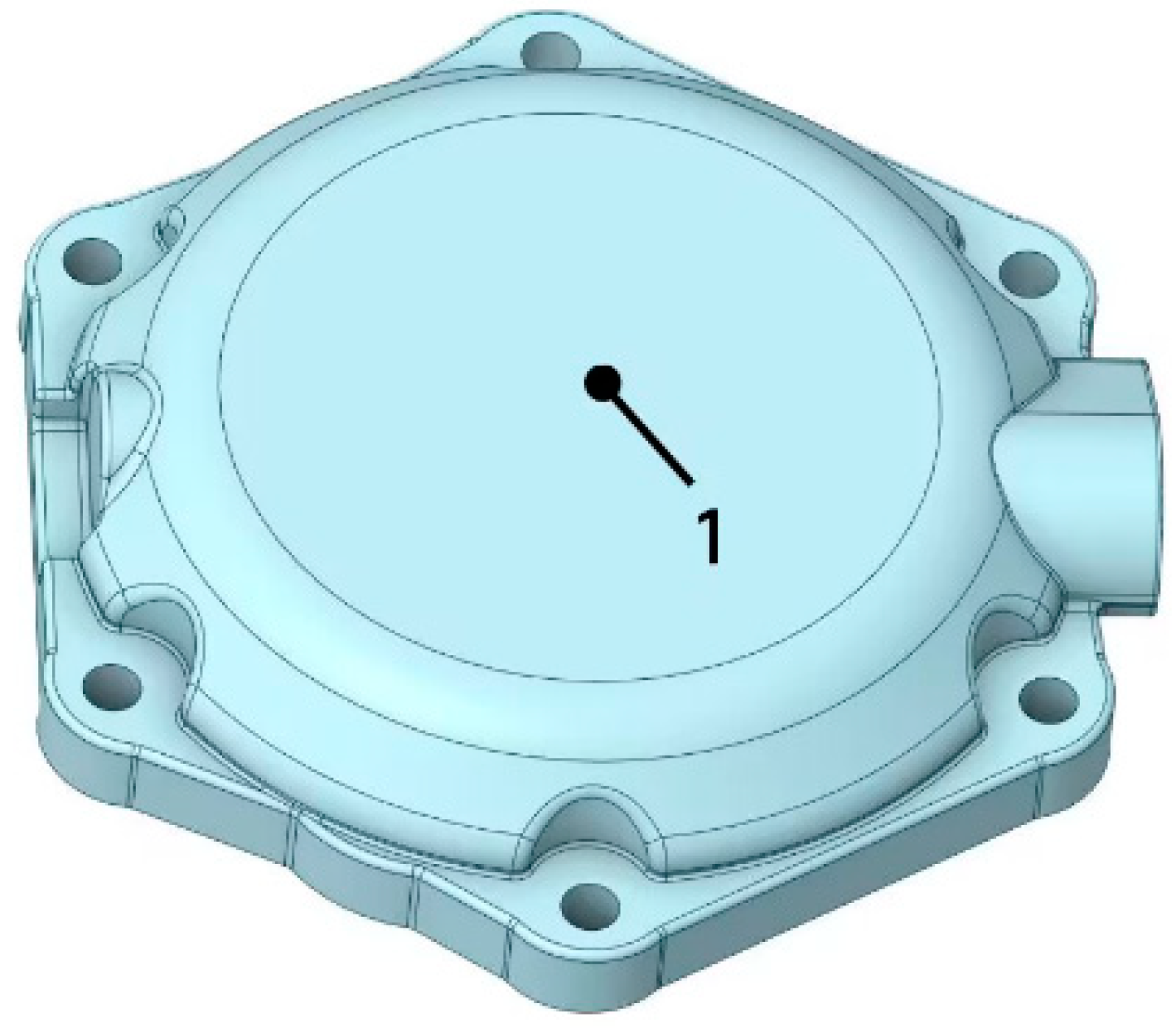
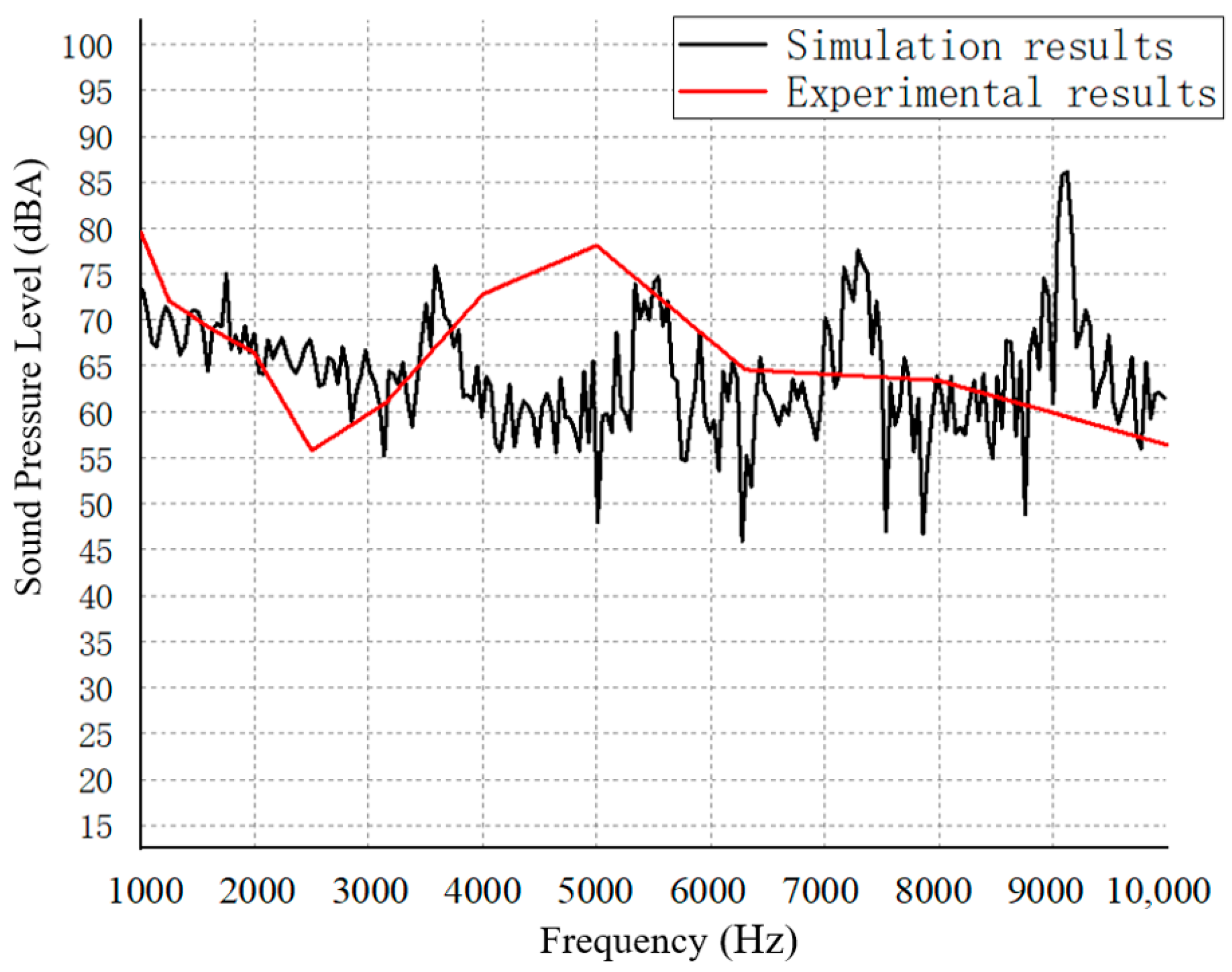


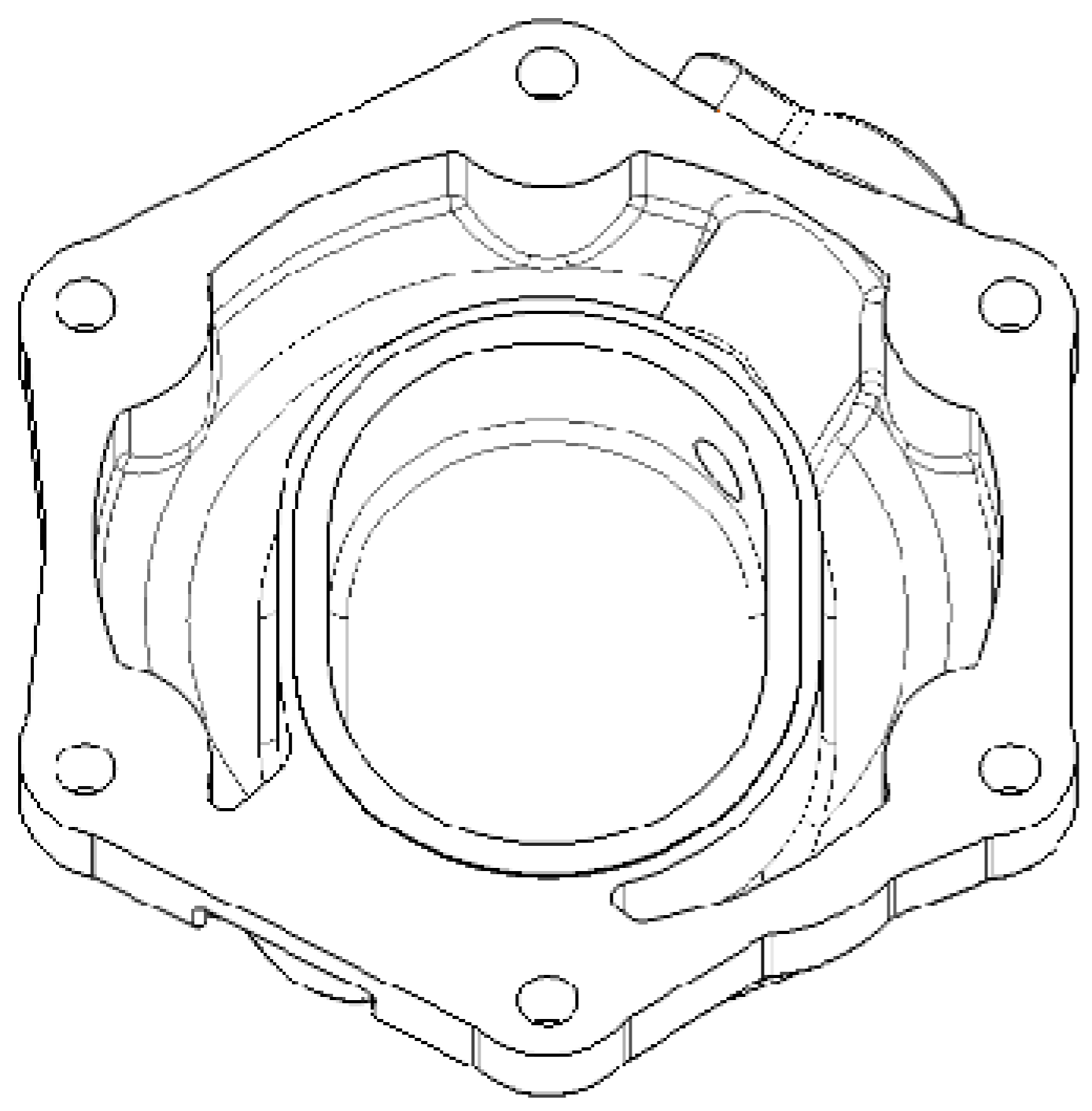


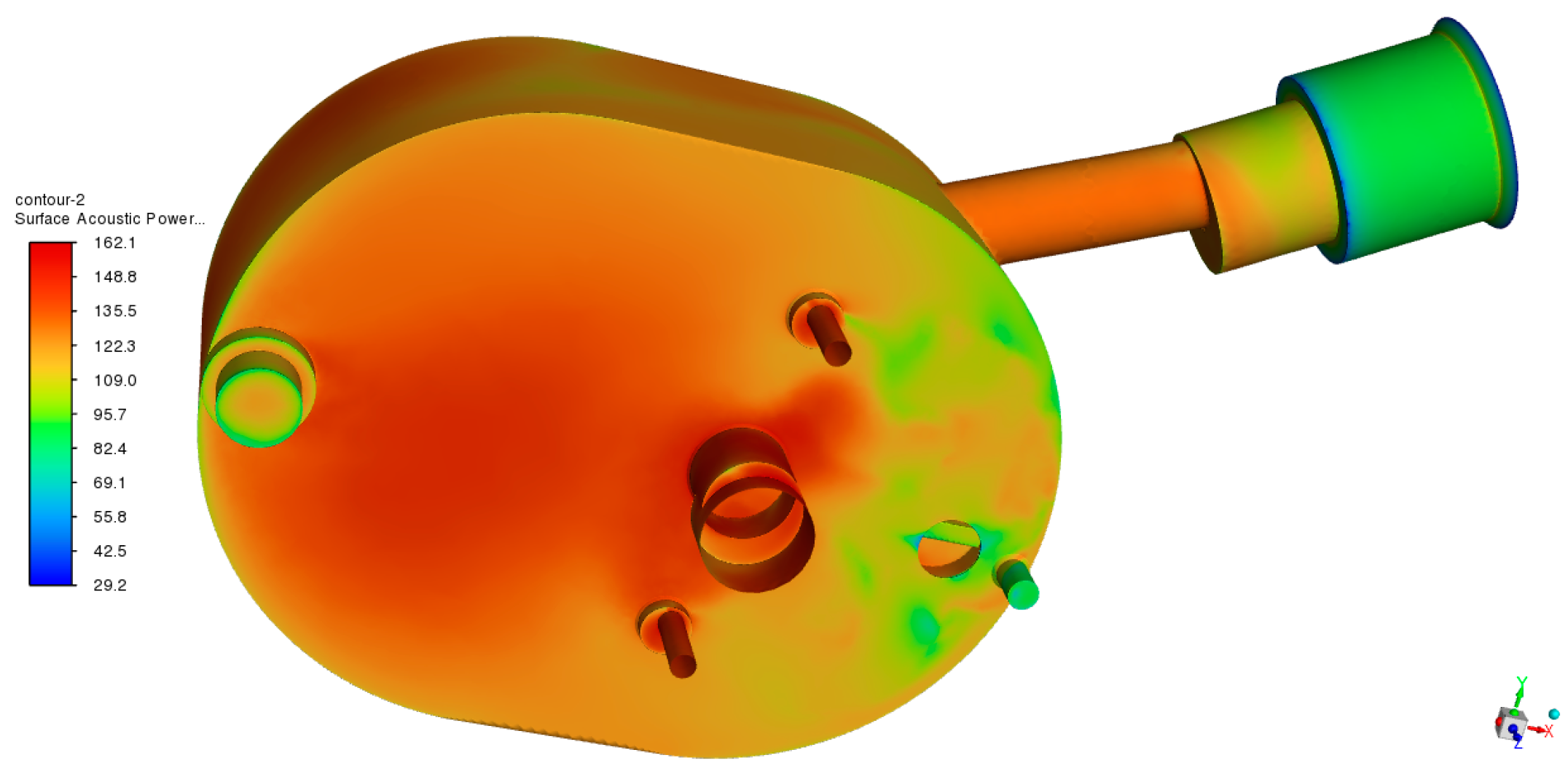

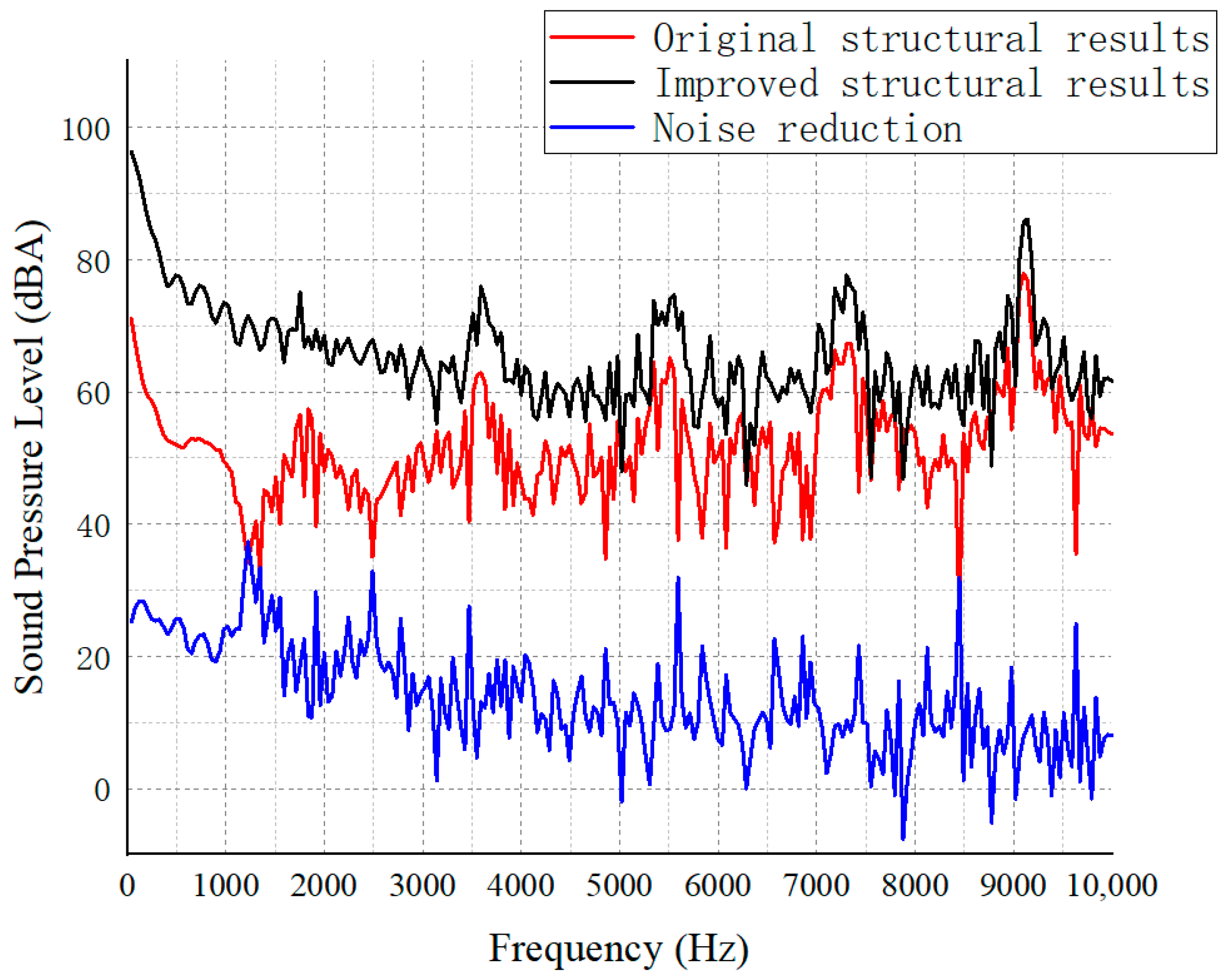
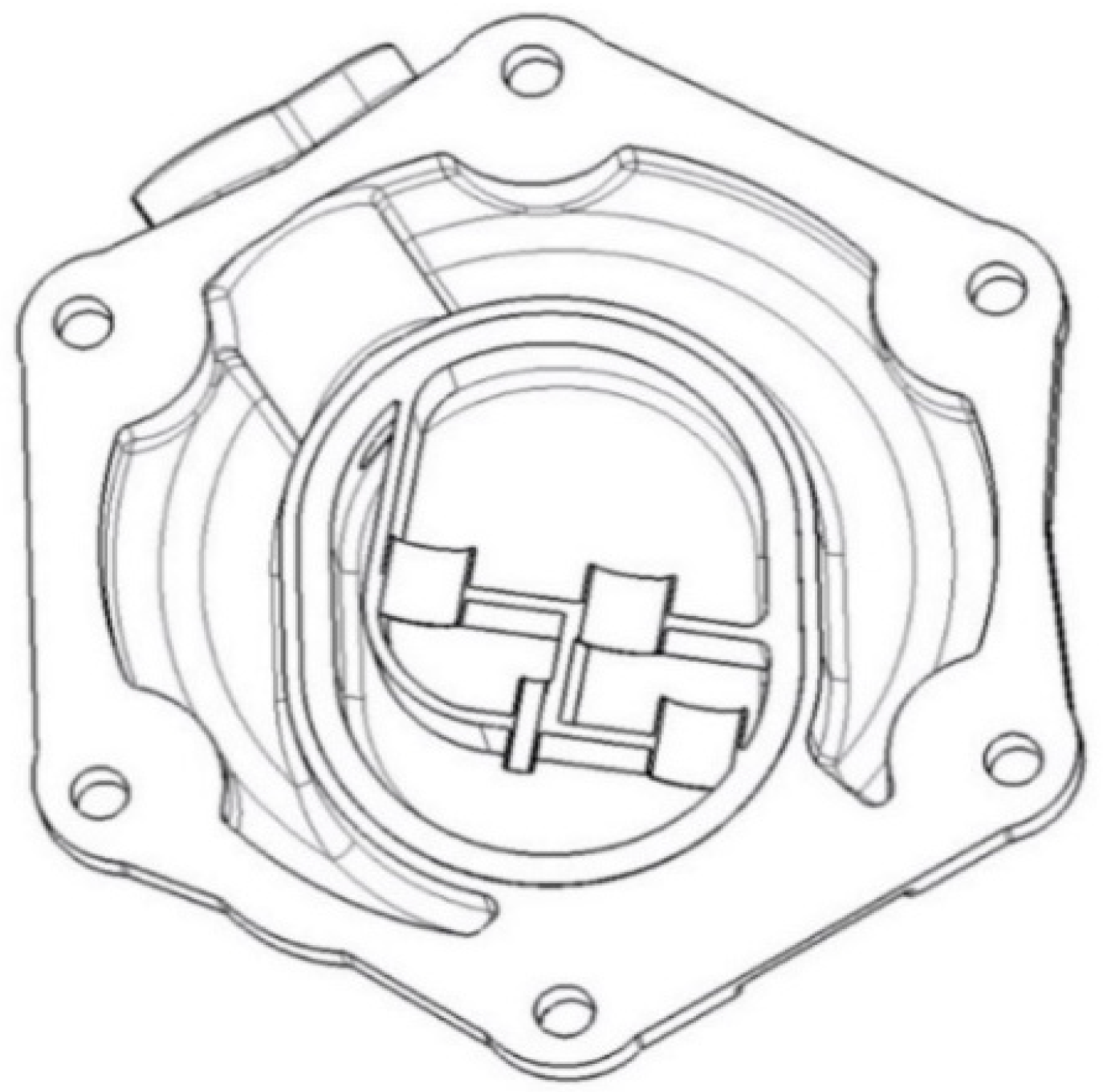
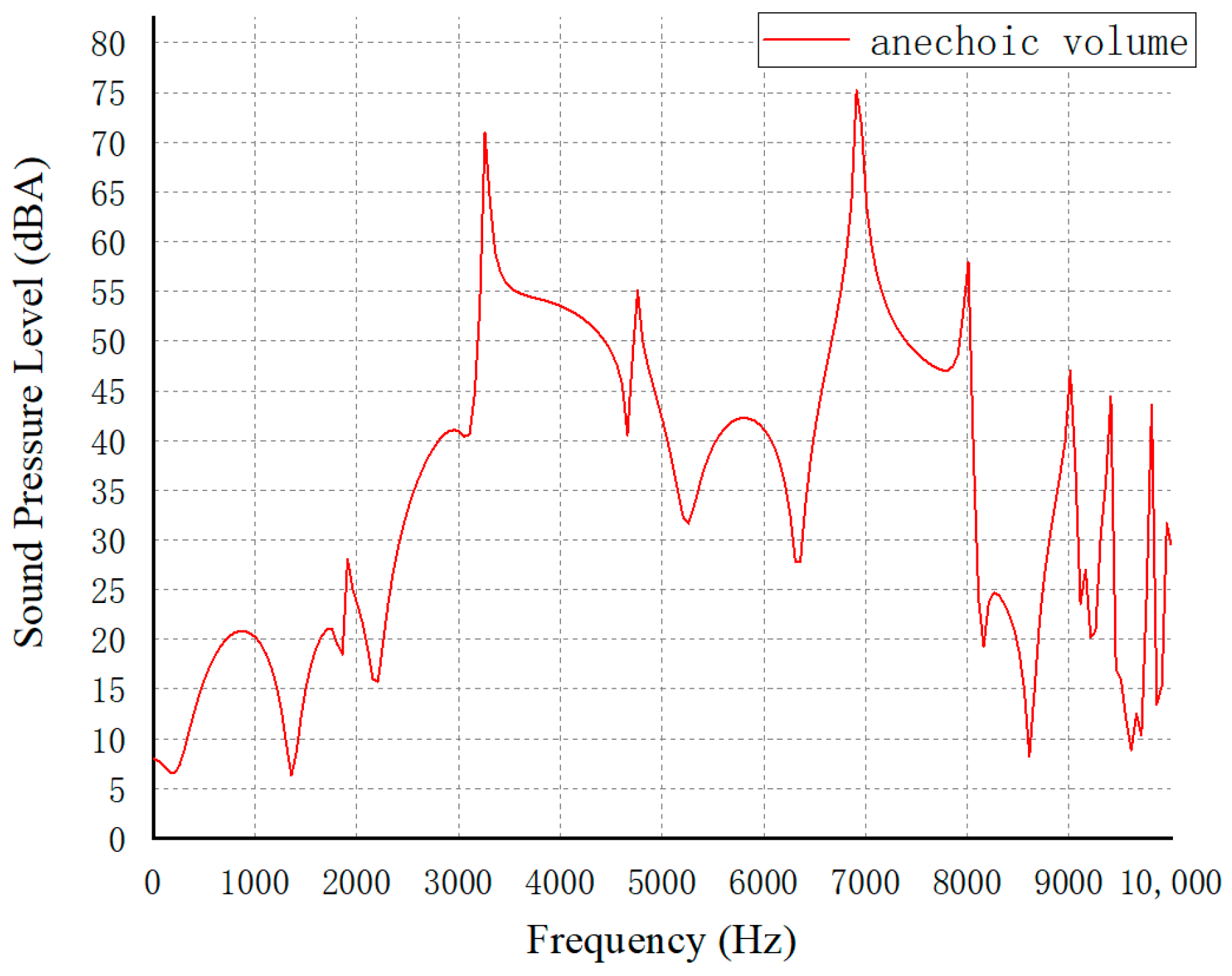
| Compressor Components | Material |
|---|---|
| Stationary scroll disk | HT250 |
| Compressor end caps | aluminum |
| Refrigerants | R134a |
| Calculation Parameters | Value |
|---|---|
| 5.64 | |
| 0.009 | |
| 2.5 | |
| 80 | |
| 1.75 | |
| 72 |
Disclaimer/Publisher’s Note: The statements, opinions and data contained in all publications are solely those of the individual author(s) and contributor(s) and not of MDPI and/or the editor(s). MDPI and/or the editor(s) disclaim responsibility for any injury to people or property resulting from any ideas, methods, instructions or products referred to in the content. |
© 2024 by the authors. Licensee MDPI, Basel, Switzerland. This article is an open access article distributed under the terms and conditions of the Creative Commons Attribution (CC BY) license (https://creativecommons.org/licenses/by/4.0/).
Share and Cite
Gao, F.; Yang, B.; Li, X.; Wu, J. Noise Analysis and Structural Optimization of Automobile Scroll Compressor Air Valve. Appl. Sci. 2024, 14, 4875. https://doi.org/10.3390/app14114875
Gao F, Yang B, Li X, Wu J. Noise Analysis and Structural Optimization of Automobile Scroll Compressor Air Valve. Applied Sciences. 2024; 14(11):4875. https://doi.org/10.3390/app14114875
Chicago/Turabian StyleGao, Feng, Bin Yang, Xin Li, and Jinguo Wu. 2024. "Noise Analysis and Structural Optimization of Automobile Scroll Compressor Air Valve" Applied Sciences 14, no. 11: 4875. https://doi.org/10.3390/app14114875






